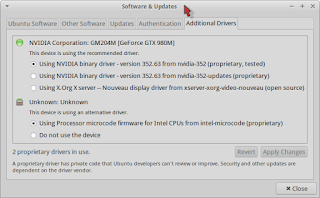devilspie2 window sizing control
The devilspie2 utility is really awesome. Primarily I use it to keep my browser windows in place and at the right size for my screens. Caution, these settings are for 4k monitors. Firefox is tricky because I want my compose windows for OWA to be small but I don't get a lot of window information from Firefox. I use separate configuration for google-chrome and that makes it convenient to ID the right window. -- debug_print command does only print anything to stdout -- if devilspie2 is run using the --debug option debug_print("----------------------------------------------------------") debug_print("Window Name: " .. get_window_name()); debug_print("Application name: " .. get_application_name()); debug_print("get_window_geometry(): " .. get_window_geometry()); debug_print("get_window_client_geometry(): " .. get_window_client_geometry()); debug_print("get_window_type(): "

